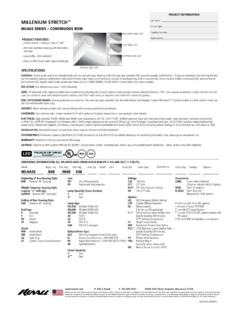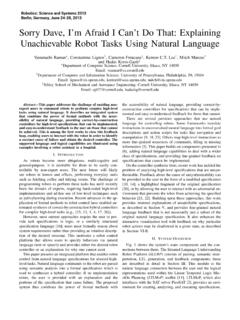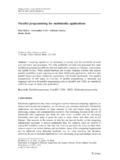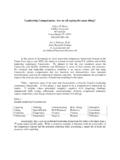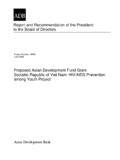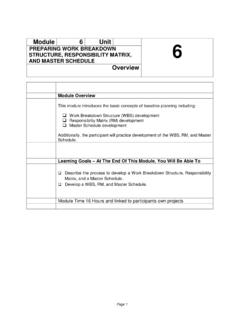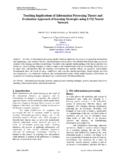Transcription of Critical Thinking and Judgment: The Key to …
1 1 Critical Thinking and Judgment: The Key to Effective Leadership by Colonel (Retired) Stephen Gerras, PhD Organizational Behaviorists cite several key attributes and competencies typically associated with effective leadership. High energy, conscientiousness, and cognitive ability make most lists. Unfortunately, these attributes are not very malleable, especially for adults. Fortunately, there are also several competencies related to effective leadership but distinct from traits-- that can be developed through education, self-development, and most often, experience. Experts most often cite judgment as a key leadership competency.
2 Leaders make dozens of judgments every day. From deciding who will get promoted to refining a strategy for entrance into a new market, leaders sink or swim depending on their ability to exercise sound judgment. How do you develop judgment? A succession of stretch assignments, for instance, will only develop judgment if leaders learn the right lessons. More importantly, if otherwise promising leaders fail to recognize what s different? in a new situation, they may apply the wrong lessons learned to a new situation. Enter Critical Thinking . Many political, business, and public sector leaders emphasize the need for Americans to become better Critical thinkers.
3 These leaders know that complexities of business in the Information Age demand better judgment and that better judgment requires Critical Thinking . Although many leaders assert the need for more Critical Thinking , one of the main impediments to understanding and using Critical Thinking centers on a lack of a common definition. No one discipline owns the construct. Most of the material about Critical Thinking derives from philosophy, education, and Some leaders mistakenly refer to the Critical in Critical Thinking as mere fault-finding. Fault-finding is not what Critical Thinking entails. The word Critical refers to the purposeful, reflective, and careful evaluation of information as a way to improve one s judgment.
4 As senior leaders, whether we are evaluating the information from a PowerPoint presentation at a business meeting, reading a newspaper article, or participating in a discussion with the head of our India office, we constantly face demands requiring Critical Thinking . Consequently, one of the most important things that a leader must learn is not simply how to think critically, but how to do it well. Critical Thinking is purposeful, directed thought. It requires reflective skepticism mixed with an open mind this is a difficult combination of tasks almost requiring individuals to simultaneously use both their right and left sides of their brain to tackle an issue.
5 Critical Thinking development requires several things. First, because it is difficult, the individual has to recognize the need for Critical Thinking or he may not persevere in learning the skills. Second, the basic tenets, concepts, and relationships associated with Critical Thinking must be learned. Third, individuals must focus on self-awareness. 360 degree feedbacks are a great way to do this. Finally, and sometimes most importantly, individuals must work in an environment that values Critical Thinking this is a climate and culture issue. 2 A Critical Thinking Model Figure 3-1. A Critical Thinking Model. Figure 3-1 presents a Critical Thinking model that will be explained throughout the rest of this paper.
6 Two issues need to be highlighted. First, most of the time (almost all the time) the leader needs to move across the top of the model and not do Critical Thinking . The great majority of the decisions and issues we face throughout the day do not require Critical Thinking . The route we drive to work, what clothes we wear to a party, and what book we read on Saturday are examples of decisions or concerns that do not normally require Critical Thinking and can be made in an automatic mode of cognitive thought. An example of an automatic mode of cognitive thought is the routine of driving down the Interstate at 70 miles per hour to a familiar destination.
7 At some point the driver may recognize that he or she is not quite sure where he or she is or does not actually remember driving the last five miles; it is probably because the mind has switched to an automatic processing mode. This is a common experience. How does the brain permit this mode of thought while operating a 5,000-pound vehicle moving 70 miles per hour and within several feet of large tractor trailers moving equally fast? The explanation is that over time, driving even at a high rate of speed becomes an automatic routine. To conserve mental energy, the brain tends to reduce focus, especially with seemingly routine activities. Unfortunately, most decisionmakers make judgments on significant issues using an automatic mode as opposed to taking the time and investing the energy needed for a more controlled thought 3 Exercising controlled thought involves the deliberate use of elements of Critical Thinking .
8 Knowing when to reign back on automatic processing in order to conduct a conscious assessment of the parameters of the situation is more an art than a science. A good rule of thumb is if you are in doubt as to whether to use Critical Thinking about an issue, you probably ought to apply Critical Thinking . The main point is that most routine decisions made on a day-to-day basis do not involve Critical Thinking ; however, once familiar with the concepts and terminology of Critical Thinking , you are in the position to ask yourself whether the issue being considered warrants the application of Critical Thinking methodology. Second, although the model appears to be generally linear, it is not.
9 The clouds in the center of the model labeled point of view, assumptions, and inferences are meant to demonstrate that this is generally a nonlinear model. Assumptions, for instance, will affect whether you perceive an issue to be worthy of Critical Thinking , and your point of view will affect how you define the boundaries of the issues. Although there are arrows going from clarify concern to evaluation of information (implying linearity), there is also a reciprocal arrow going in the reverse direction to suggest that as you are evaluating information, you may end up redefining the concern. If, for example, you are seeking to clarify concern regarding some inappropriate behavior by your teenage son or daughter, the evaluation of information may indicate that the real issue has more to do with the nature of the relationship between you and your child than the actual behavior prompting the initial concern.
10 The nonlinear nature of the model will be more evident as you next read about its main components: clarify concern, evaluate information, consider points of view, identify assumptions, make sound inferences, and consider implications. Clarify Concern A Critical element, and often the first step, in Critical Thinking methodology is to clarify concern. This is not as straightforward as it seems. When faced with a decision, leaders often spend the bulk of their time reviewing possible choices. They fail to do the up-front work of problem identification and construction. The concern or issue needs to be identified and clarified initially, yet consistently revisited as other elements of the model are considered.




